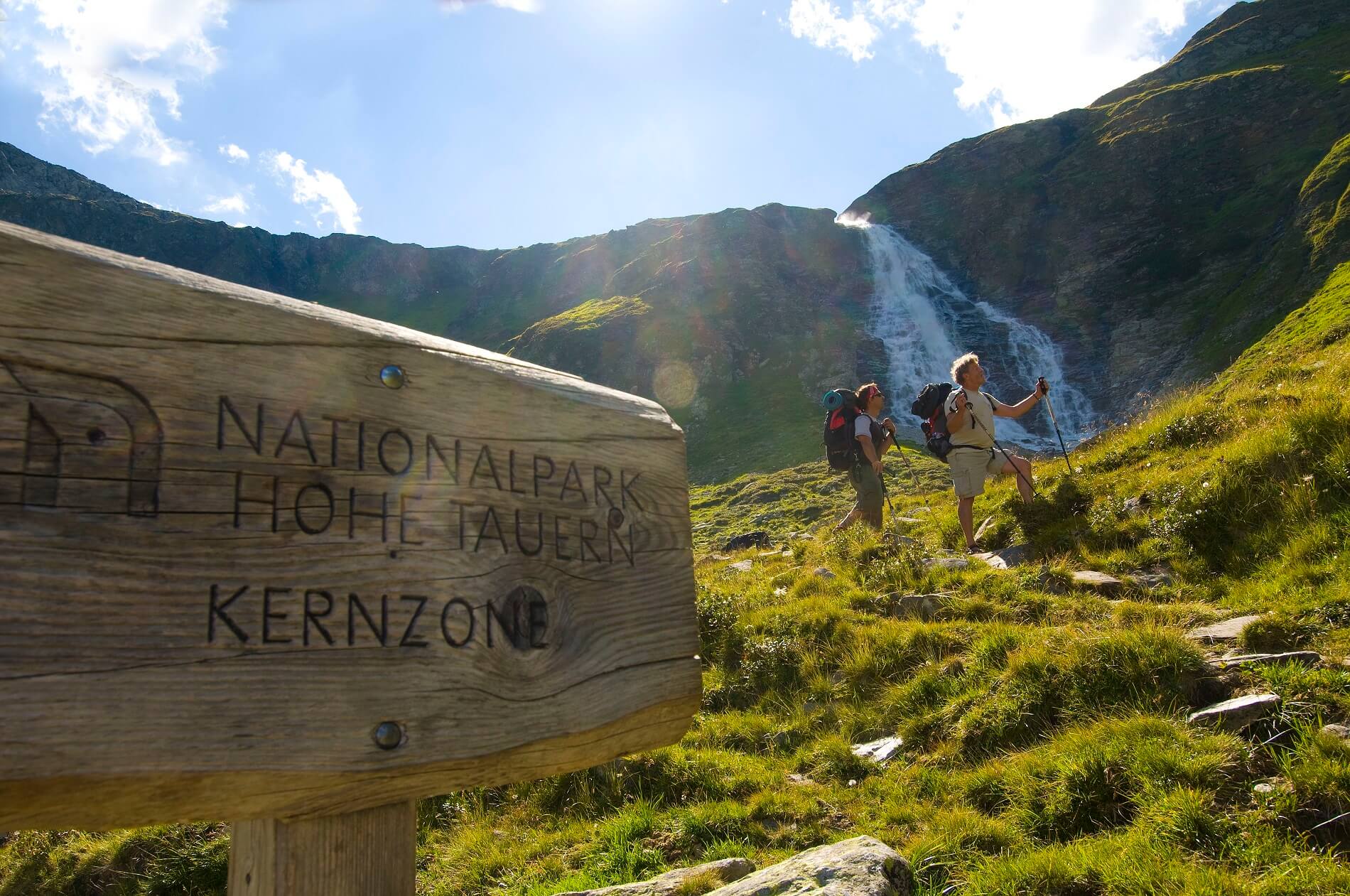UMMERTIME IN HEILIGENBLUT
Holiday apartments in Heiligenblut – at the foot of Grossglockner Mountain
With its exclusive holiday apartments, the CHALET ALPIN is centrally located and stylishly nestled in the untouched landscape of Heiligenblut. The village of Heiligenblut lives exactly how your first impressions will tell you. Tranquil, down to earth and welcoming are all characteristics that one expects on a vacation and they are exactly what this famous mountain village delivers. The rich and colorful history, the romantic location set aside from the worries and strife of your everyday and the welcoming locals invite you to take your next vacation here in Heiligenblut.
AN IMAGE
A holiday in Heiligenblut offers everything that millions of people around the world know from the postcards of friends and loved ones.
The famous image of a small mountain village, its proud late-gothic church, all huddled closely together with accomodations and farmyards in the middle of an idyllic mountain landscape accentuated by the glacier covered formation that is the Grossglockner Mountain.
Heiligenblut on the Großglockner is however much more than just a world famous photomotiv It is a staging point for experiencing the incredible Hohe Tauern National Park where the mythical, ever-present Grossglockner maintains its eternal watch.
A JEWEL OF NATURE
With 3,798 m no other peak in Austria cuts through the sky so high as the Grossglockner. But, it is not simply the height of its peak, but its charm that draws people towards Grossglockner Mountain. A natural paradise spreads out underneath the sublime visage of the Grossglockner. A white ring of glaciers shine in the summer sun, giving off pure glacier water that rushes into turquoise lakes like precious stones laying around a singular cirque.
Untamed glacier streams crash over enormous rock formations, become wild waterfalls and wind their way through ravines ever approaching the valley floor. Seemingly unimpressed by the raw power of nature in the streams, seas of fragrant flowers sway in the meadows and hearty mountain forests quietly look on.
Heiligenblut: Holy Blood – a great name – a great history
As the legend goes, a Danish prince by the name of Briccius was making his way home from Constantinople in the year 914 when he was trapped in an avalanche as he attempted to cross the Tauern Alps. He had hidden a small vial containing blood from a crucifix in an old war wound in his leg and had allowed it to heal over in order to conceal the vials from the soldiers of the Ottoman Emperor.
According to legend, three oak saplings mysteriously began to grow on top of the mass of snow that had buried Briccius. Local farmers cam to investigate and when they began digging, they discovered Briccius. Only a few short days after the farmers had given Briccius a proper burial, his leg had somehow managed to come out of the earth. When the locals inspected Briccius more closely, they discovered the hidden via in Briccius’ leg.
Since then, the vial from the leg of Briccius has been kept in a tabernacle that now lays in the Church of Holy Vincent, built in 1491. The village owes its name to this legend.
Heiligenblut am Großglockner ist aber viel mehr als ein weltberühmtes Fotomotiv! Ausgehend vom Glocknerdorf wartet der anmutige Erlebnisraum des Nationalparks Hohe Tauern darauf entdeckt zu werden, wobei der Mythos des Großglockners stets allgegenwärtig ist!
EIN NATURJUWEL
Mit 3.798 m erhebt in Österreich kein Berggipfel sein Haupt so hoch in den Himmel wie der Großglockner. Doch es ist nicht nur der Gipfel selber, der seinen Charme hat. Rund um sein erhabenes Antlitz herum erstreckt sich ein wahres Paradies der Natur. Ein weißer Ring von Gletscherfelder glänzt in der Sommersonne, deren Schmelzwasser bildet türkisblaue Bergseen, die wie Edelsteine in einsamen Bergkesseln liegen.
Ungezähmte Gletscherbäche stürzen über mächtige Felsvorsprünge, werden zu tosenden Wasserfällen und graben sich ihren Weg durch wilde Schluchten gen Tal. Doch unbeeindruckt von dieser Rohgewalt breiten sich gleich angrenzend, duftende Blumenmeere von Almwiesen und saftig grüne Bergwälder aus.
Heiligenblut: Ein großer Name – eine große Geschichte
Der Legende nach, war einst ein dänischer Prinz mit dem Namens Briccius, um 914 auf dem Rückweg von Konstantinopel bei der Tauernüberschreitung von einer Lawine verschüttet worden. Er hatte sich in einer alten Kriegsverletzung am Fuß ein Fläschchen mit dem Blut aus einem Kruzifix einwachsen lassen, um dieses vor Soldaten des Osmanischen Kaisers zu schützen.
Wie die Sage erzählt, sollen aus den Schneemaßen, unter denen dieser verschüttet war, drei Ähren herausgewachsen sein, wodurch sein Leichnam von Bauern gefunden worden wäre. Als die Bauern Briccius bestatten wollten, habe nach wenigen Tagen sein Bein wieder aus der Erde herausgeragt. Als man der Sache auf den Grund ging, fand man der Überlieferung nach dieses Fläschchen in der Wade Briccius.
Das Fläschchen wird seither im Sakramentshaus, der im Jahr 1491 fertiggestellten Kirche des Heiligen Vinzenz aufbewahrt. Der Name der Gemeinde leitet sich daher von dieser Sage ab.

